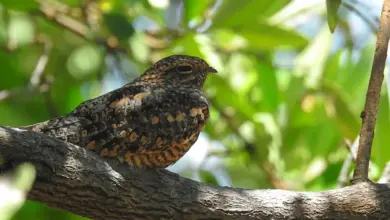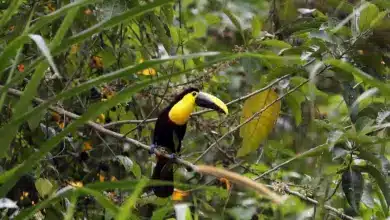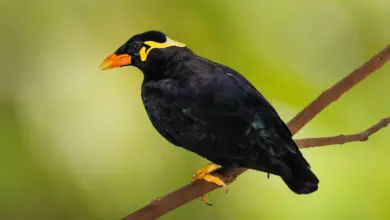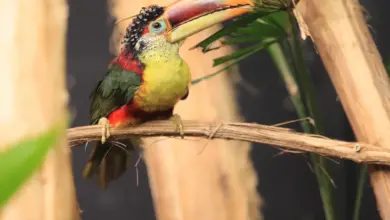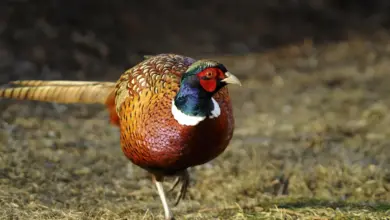The Yellow-eared Toucanets (Selenidera spectabilis) are Toucans found in the humid forests in Central America and western Colombia (the Chocó).
Distribution / Range
The Yellow-eared Toucanets occur naturally in northern Honduras south to northwestern and central western Colombia and extreme northwestern Ecuador in Esmeraldas – a coastal city in northwestern Ecuador.
They have not been recorded in southwestern Colombia.
They are native to the following countries: Colombia, Costa Rica, Ecuador, Honduras, Nicaragua and Panama.
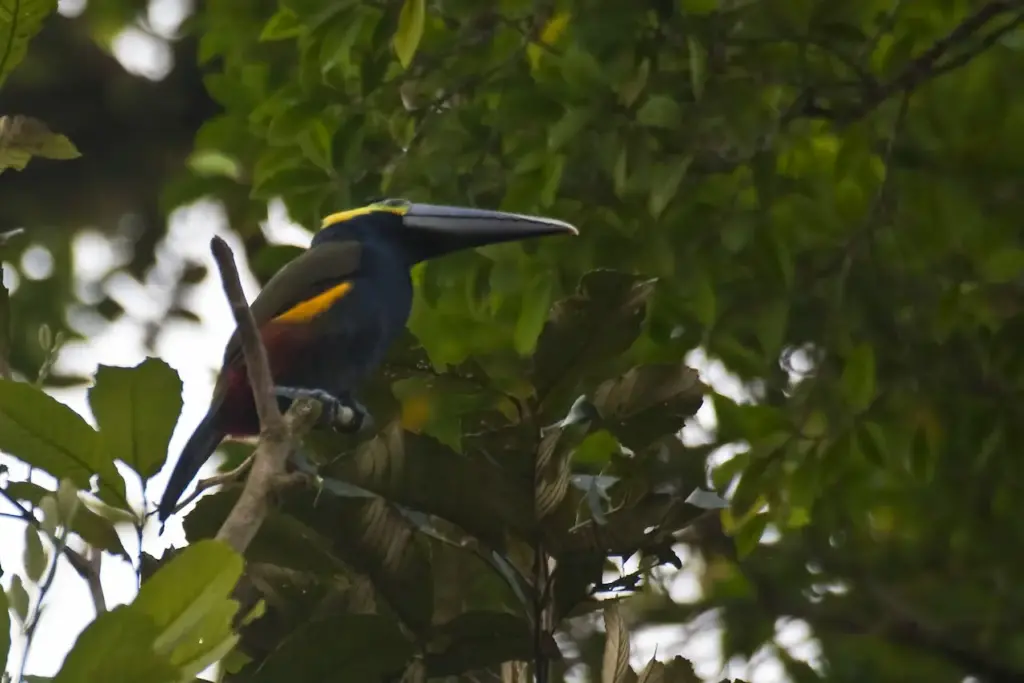
Description
Yellow-eared Toucanets are relatively large in size, with a total length of approximately 38 cm (15 in).
Males have yellow auricular streaks feathers covering the ears) which are absent in females. Females have a brown crown.
Toucanets have distinctive coloration, markings, and are particularly noted for their large colorful bills.
They are fairly long-lived with a lifespan around 20 years.
Breeding / Nesting
The mating ritual is a fun-loving affair for toucans, as they throw fruit to one another.
Like all of their other activities, nesting happens high up in hollow areas in trees. The bill is not effective for digging or any other type of extensive excavation work and so they must rely on holes already formed by other means.
The nests are not lined, but the two to four shiny white eggs that are laid each year rest on a few wood chips created while enlarging the opening or on various kinds of regurgitated seeds collected for this purpose.
Parents share equally in incubation duties, but rarely sit on the nest for more than an hour at a time and the eggs are often left uncovered. Both parents share in feeding fruit to the babies for up to 8 weeks.
After 16 days the nestlings are born blind, with no trace of down on their pink skin. The bill is unremarkable until about 16 days old when it takes on the distinguishing features of the toucan, and requires up to four months to develop fully. Feathers begin to expand at 4 weeks.
Babies have pads on their elbows that protect their feet by keeping them elevated until they fledge.
Breeding in captivity requires attention to a number of details. Even successful breeders report rates as low as 30% for the incubation of eggs.
